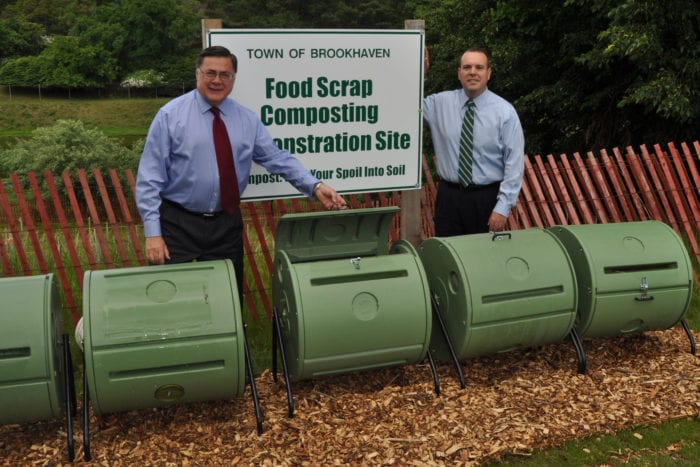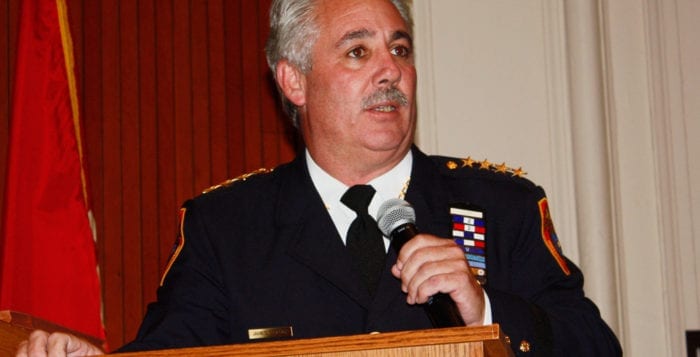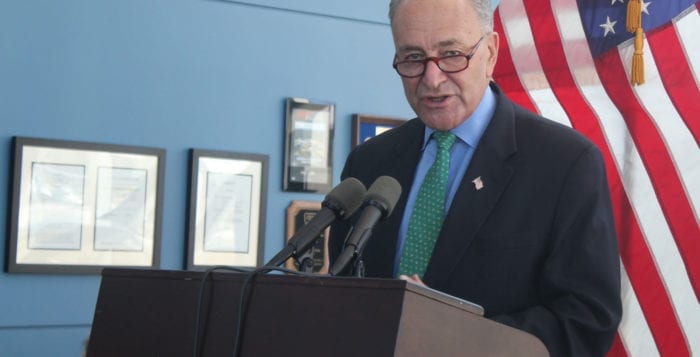As far as the Town of Brookhaven is concerned, going green is not just a casual practice — it’s a moral obligation to ensure Long Island’s future.
In the last few months, Supervisor Ed Romaine (R) and members of the town board have launched a series of environmentally friendly initiatives and continued ongoing efforts that encourage local residents to
reduce their carbon footprints and preserve the serenity of their surroundings.
“Whenever there are ways to benefit the environment, I’m 100 percent involved [and] I’m blessed by an extremely supportive town board,” Romaine said, highlighting an especially strong partnership with Councilwoman Jane Bonner (C-Rocky Point). “I don’t want to say Jane is my environmental soulmate, but she and I are on the exact same page. She is one of my cheerleaders in every manner, shape or form.”
Other environmental actions taken by Brookhaven:
– A 127-acre solar farm called Shoreham Solar Commons will be constructed on the recently closed Tallgrass Golf Course.
– The extension of the Pine Barrens to include 800 acres of national property around the former Shoreham nuclear plant will go forward upon Gov. Andrew Cuomo’s (D) signed authorization.
– A multiyear project to convert all 40,000 of Brookhaven’s streetlights to LED bulbs has begun with 5,000 already converted.
– Through a partnership with U.S Rep. Lee Zeldin (R-Shirley) and the Federal Emergency Management Agency, the town has secured funding to fix stormwater infrastructures along the North Shore, from Miller Place to Shoreham.
– A center at Ceder Beach in Mount Sinai has been established to grow millions of oysters and sea clams that filter and clean the water.
In May, Bonner held her fifth bi-annual Go Green event at the Rose Caracappa Senior Center in Mount Sinai. It’s the town’s biggest recycling event where residents can dispose of unwanted medication and prescriptions and recycle old TVs and computers, as well as paper. The e-waste drive gathered 15,000 pounds of electronic waste and shredded 13,580 pounds of paper products and 26 boxes of unwanted pharmaceutical drugs, according to the town.
The councilwoman also hosted a Homeowner’s Guide to Energy Efficiency forum at the center later in the month, educating residents on how to get a free energy audit, affordable home energy improvements and save $1,000 a year on home energy bills. Through this effort, less fossil fuels are used to heat and light homes.
“We take it very seriously,” Bonner said of the town’s green initiatives. “We have a moral obligation to be good stewards of the Earth and this transcends party lines. Regardless of party affiliation, we all know we can do a better job of taking care of the planet.”
Aside from providing free compost and mulch to residents at Brookhaven Town Hall, officials also recently utilized a $5,000 grant to rip up the back lawn of the property to plant and restore native Long Island grasses, from which seeds can be collected and used.
In June, the town officially authorized the nonprofit Art & Nature Group Inc. to transform Brookhaven’s historic Washington Lodge property into a community nature center that offers environmental education programs.
Romaine and Councilman Dan Panico (R-Manorville) organized Brookhaven’s Food Scrap Composting pilot program at town hall last month, with hopes to expand it as a townwide initiative.
Through the program, town employees can deposit food waste, such as banana peels and coffee grinds, into organic material collection containers placed throughout the buildings, which are then collected and composted to be used for garden beds around town buildings.
“We must provide alternative waste management solutions like these if we are going to provide a cleaner, greener earth for future generations,” Panico said in a statement.




















